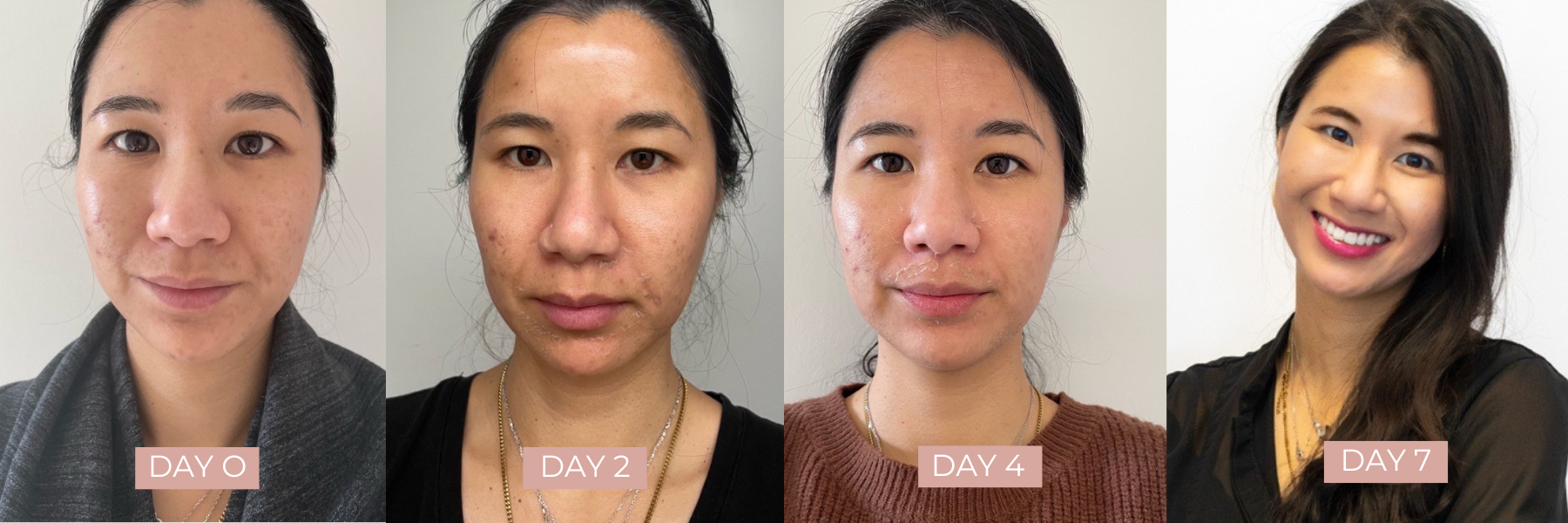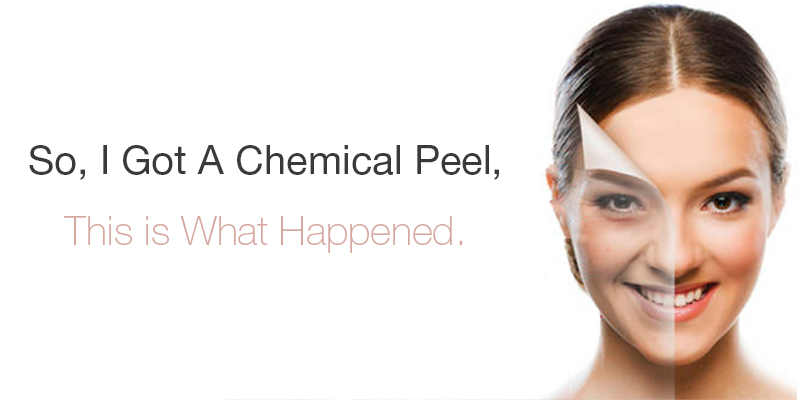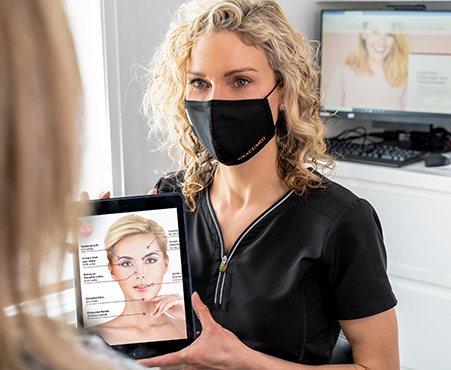“The stigma of “Getting work done” is thankfully no longer.
In our series, So I Got This Done, we’re breaking down everything you need to know about getting a medical aesthetic procedure from injectables to skin treatments. Whether you decide to go under the needle or laser, you deserve a reputable Practitioner and honest information.”
Let’s start here. I was terrified of having my face chemically burned off. Learn from Samantha. Season 5. Episode 5 when she, being the good friend that she is, showed up to Carrie’s book release party with what looked like first-degree burns on her face. But like all things, no pain no gain so here I am writing this post. If you don’t have time to read to the end, and I hope you do, the Coles notes is, there was literally no pain and all gain.
It all started when my best friend, who is always up to date on the latest beauty trends, arrived to dinner with skin that belonged in an Oil of Olay commercial. “Chemical peel” was the answer when we all collectively demanded to know what turned her into porcelain. I wanted what she had and if a chemical peel would give it to me, burn off my face.
I made my appointment at GraceMed Downtown Toronto and got myself mentally prepared. I was nervous as heck when I arrived but within minutes, the space and friendly faces put me at ease. The moment my aesthetician introduced herself, I knew I was in good hands. Rachel was like the stranger you immediately knew you’d be friends with. She explained the entire process. Three and a half times in fact. I had questions. And lots of them. Let’s start with what it is.
Chemical peels are cosmetic treatments that involve using acids to exfoliate the skin. Popular options include glycolic acid peels, TCA peels (trichloroacetic acid), salicylic acid peels, and Jessner’s solution peels (a blend of lactic acid, salicylic acid, and resorcinol).
The acid removes a uniform amount of damaged skin cells across the treatment area. When done my a professional, this allows the skin to heal, with minimal scarring or skin pigment changes. Chemical peels can affect two layers of the skin, the epidermis, and the dermis. The epidermis is the visible outer layer, and the dermis lies just beneath.
All chemical peels remove a controlled amount of skin cells from the epidermis. A stronger, medium peel may also remove a small part of the dermis. I was getting a Jessner’s peel which is considered a medium-depth peel.
It’s important to know that my skin is far from perfect. Years of acne meant years of hyperpigmentation, brown spots, uneven texture, and scarring. So, I wasn’t going from perfect to more perfect here. I was going for improvement. So while the Jessner peel was prescribed to me, another may be more suitable for your skin needs.
Now for the procedure. I took a deep breath and closed my eyes as the solution was applied. Bracing myself for the sting that never came. It was a mere tingly, like using a retinoid product, then went on its way after a minute. The rest was such smooth sailing, like a relaxing facial, I almost dozed off. One layer of acid. Then another. Then three and 20 minutes later, I was done. The chemical was neutralized by brushing another formula on my skin.
What did I look like after? Well, sort of like Samantha but far (far!) more toned down. My face was pink but like a tolerable shade of pink, not a scary shade. I probably wouldn’t have gone out to a nice lunch looking like that, but I would’ve put on a hat and grabbed groceries.
The next few days were the best parts for me. I was glued to the mirror as the chemical peel worked its magic.
Day 1: The day after my chemical peel, my face started to feel slightly tight.
Day 2: More of the same with the tightness but dryness was introduced to the mix. I found myself wanting to apply moisturizer every hour but restrained myself to 4 times that day.
Day 3: Peeling! Oh, the excitement. I noticed bits of skin around my chin had started its separation process from the rest of its skin cell buddies. Like a crack on a frozen lake, I watched as the crack grew throughout the day.
Day 4: Happy danced, more peeling. The cracks extended to the lower cheek area. Then the skin near the bottom of my nose joined the party.
Day 5: My face had accomplished about 40% of its peeling process. Like a puzzle missing random pieces, my face was a mishmash of old and new skin.
Day 6: Major peeling now and I could really start to see the difference. My hyperpigmentation had lightened about 30% and my acne scars didn’t look as enraged.
Day 7: Hallelujah! My skin had shed itself enough that I could really see the benefits. And I loved what I saw. My skin looked fresh, even-toned, and the slight indents of my acne scars were flatter.

All from a single treatment may I remind. I relished at the possibilities after 2, or 3, or even 4 . And this is how I got hooked on chemical peels. A simple, no-pain, affordable procedure that could really yield results.
If you’re thinking of getting a chemical peel, get a consultation.
With any treatment, my advice would be to arm yourself with information to ensure you achieve the results you’re after. As for me, I’ve already booked my next chemical peel, and am looking forward to the day when I can leave the house without concealer. I’m on my way.
- The Light to Medium Depth Chemical Peel 411:
- Treatment time: 30-45 mins
- Downtime: 0-24 hours
- Discomfort level: 0/10
- Best results: Performed monthly
- Addressed skin conditions:
- Faint wrinkles and fine lines
- Hyperpigmentation
- Skin tone and texture issues
- Acne scars
- Skin trauma
- Dry or damaged skin
In order to ensure you get the best results from a chemical peel, check out our post about the Top 10 Things to Avoid After a Chemical Peel.


